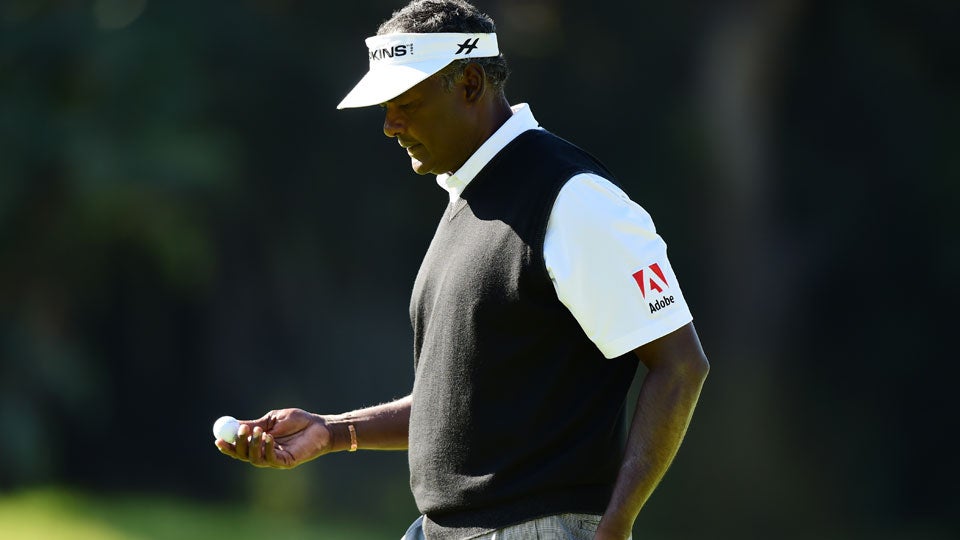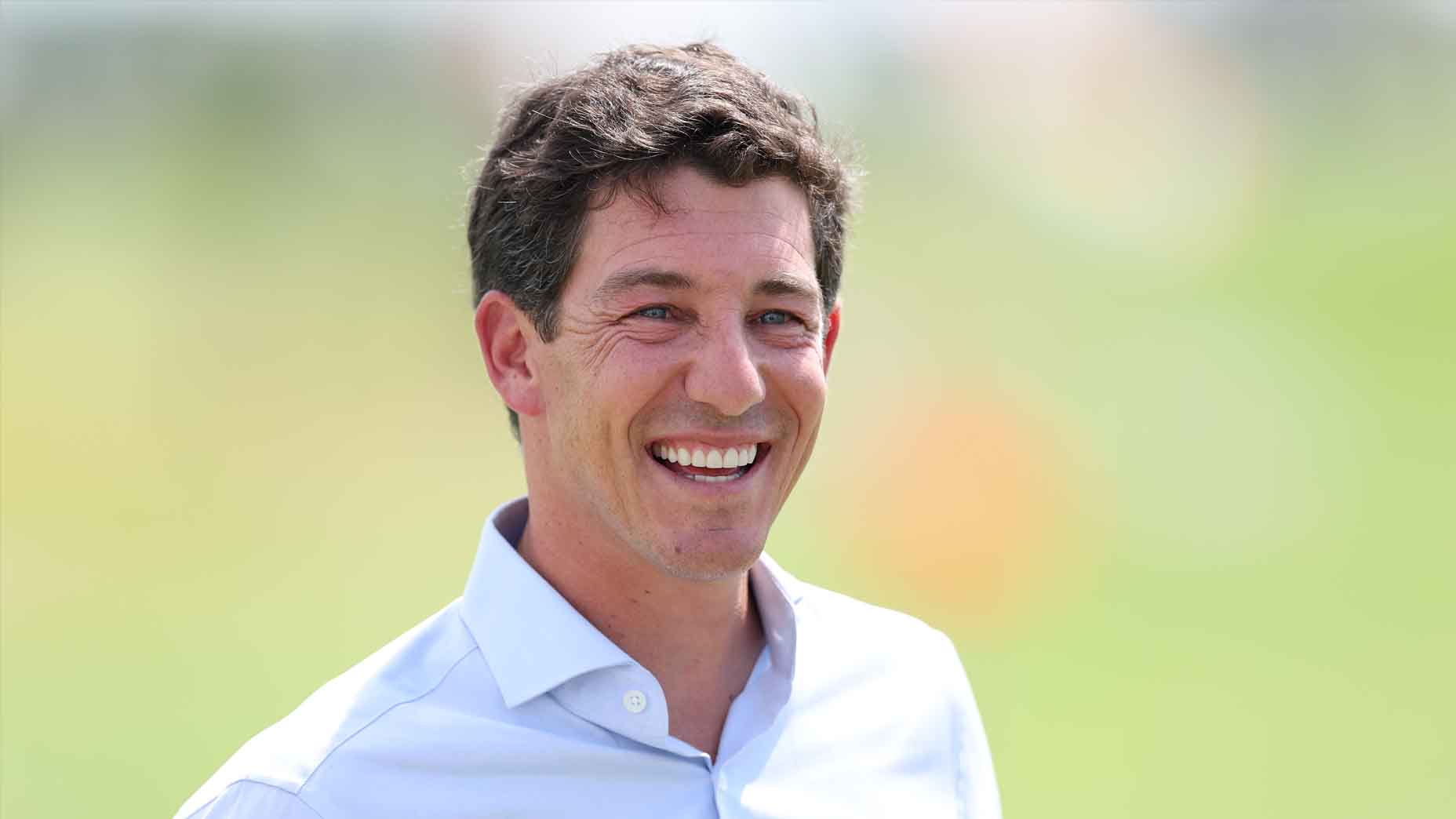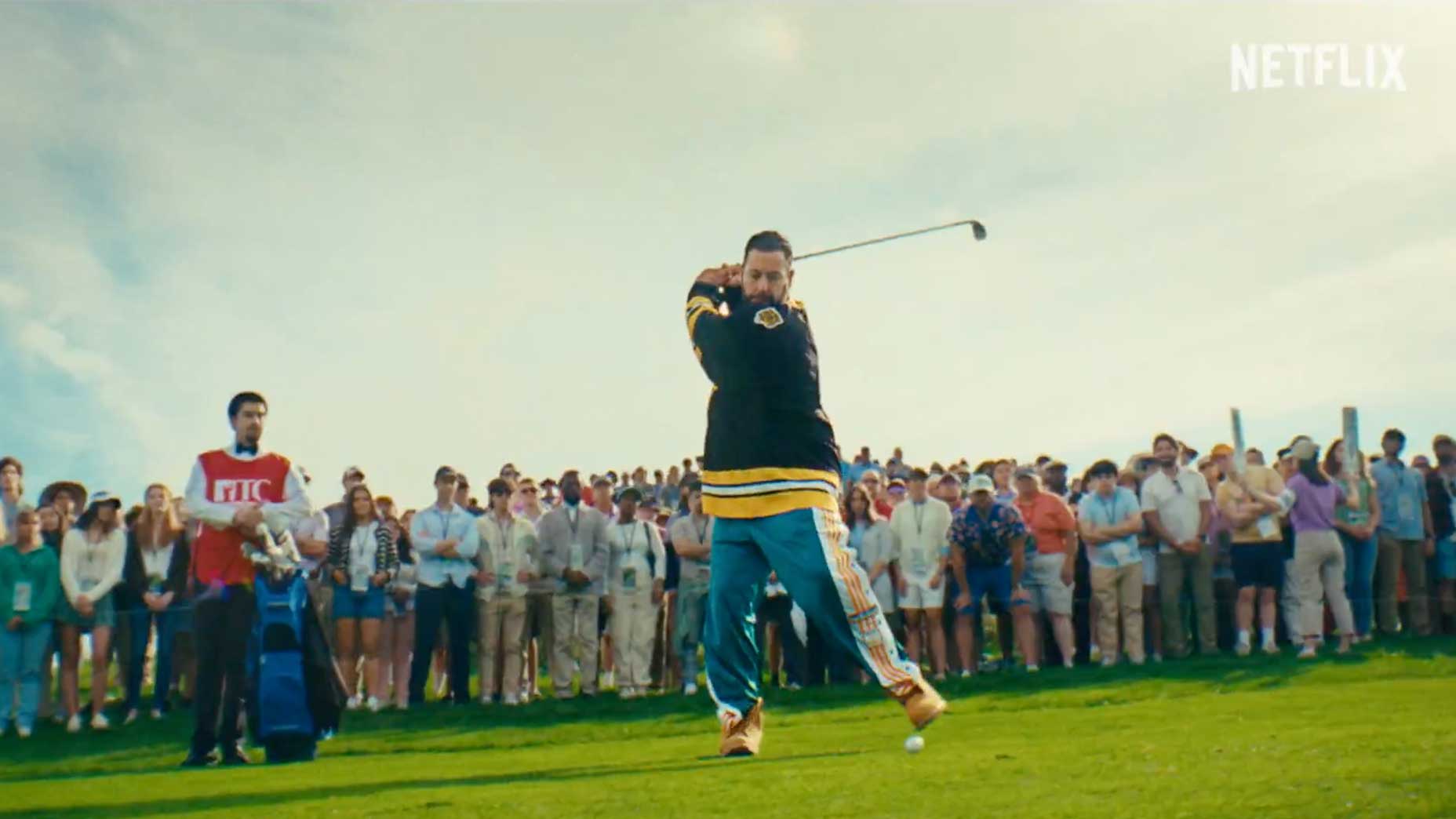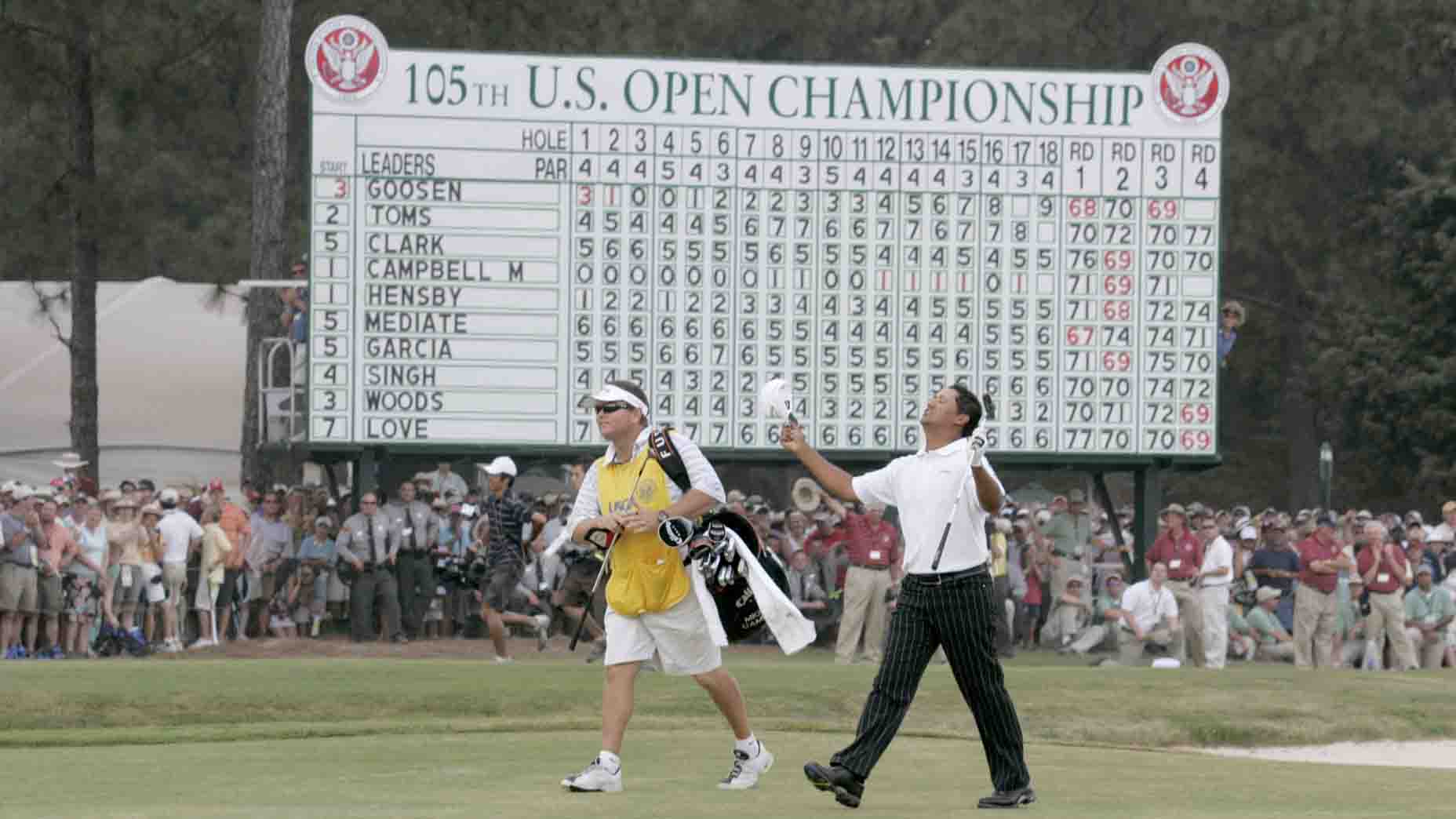A couple of months ago I attended a media symposium hosted by the World Anti-Doping Agency. Seated around a conference table at the agency’s sleek headquarters in historic Old Montreal were some of the world’s foremost authorities on performance-enhancing drugs (PEDs) and the athletes who abuse them: Juliet Macur of The New York Times, author of a hard-hitting book called “Cycle of Lies” about Lance Armstrong’s fall from grace; Nathaniel Vinton of the New York Daily News, whose sports-investigations team chronicled Alex Rodriguez’s battle with Major League Baseball and the New York Yankees following his year-long PED suspension; and Pete Madden from … GOLF.com?
I’m almost certain I was the first golf writer to darken WADA’s doorstep, and my attendance created no small amount of confusion. “What are you doing here?” I heard more than once. “Do golfers juice?” It’s a good question, and the answer is, well, complicated.
Since the PGA Tour adopted an anti-doping program in 2008, only three players have been suspended by the Tour for using PEDs, and none — Doug Barron (2009), Bhavik Patel and Scott Stallings (both 2015) — are boldface names.
That list of violators might not sound like a cause for alarm, but there’s a corollary concern: The Tour’s drug-testing program is riddled with holes, and that helps the Tour do brisk business. Commissioner Tim Finchem said as much last year.
“We went to drug-testing because the perception across the board in sports is that athletes dope,” Finchem said last February. “We even had questions raised about our sport. We felt that the image of our sport and our athletes is the number one asset by a big margin. And in our defense we want to be able to demonstrate that our players don’t [use PEDs].”
Translation: The Tour’s drug-testing program was designed not so much to catch cheaters as to reassure sponsors that there are no cheaters to catch. The resulting program is too simple, too soft and too secretive to combat the increasingly sophisticated science of doping, according to top officials from WADA and the United States Anti-Doping Agency (USADA).
In a series of interviews with GOLF.com, WADA Director General David Howman and USADA CEO Travis Tygart expressed concerns that the Tour’s reluctance to perform blood tests on its players (as do the NFL, MLB and NBA) has opened the door for athletes to gain an advantage by using performance-enhancing substances such as human growth hormone (HGH) that are undetectable by other means.
“The [Tour’s] own anti-drug policy admits that HGH can enhance performance,” Tygart said. “If it does all that good, and there’s no way to get caught using it, call me crazy, but logic tells me that unless these athletes don’t want to win, it’s a hard sell not to do it.”
Said Howman, “It’s an invitation to break the rules.”
SIGN UP: More golf news, exclusive stories and insider analysis
The Tour admits that golfers might be tempted to take HGH to add valuable yards off the tee because of its “potential to increase driving distance, which is contingent on clubhead speed.” In the modern game, driving distance is one of the surest predictors of success on Tour; the top five players in that category in 2015 cumulatively won more than $27 million.
Andy Levinson, the Tour’s vice president for tournament administration and anti-doping, has resisted blood-testing players because of concerns that the act of drawing blood could harm a golfer’s performance. However, this refusal makes the Tour’s ban on certain substances all but unenforceable, irking anti-doping officials. “Other [athletes] can give blood without it affecting their play, but golfers can’t?” Howman asked. “What’s the difference? It’s a pinprick.”
Several of the world’s top players, however, expressed enthusiasm for, or at least ambivalence toward, more extensive testing as long as the Tour wasn’t drawing blood during competition. “I’m all for more testing, the better,” World No. 3 Rory McIlroy told GolfWeek last year. “I don’t think they should blood-test at tournaments. If you’ve ever had a needle in here [pointing to his arm], you get a dead arm for a day. But out of competition, testing is no problem at all.”
Therein lies another problem. The Tour claims to conduct random testing in and out of competition, as well as at and away from tournament sites. But Tiger Woods, Phil Mickelson and McIlroy headlined a group of Tour stars who told The New York Times in 2013 that they had never been tested away from a tournament venue. Last March, John Daly called the Tour’s testing policy “a big joke” and said he and other Tour pros know exactly when they will be tested, a claim the Tour denies.
“If all you’re doing is testing at the events, there’s a huge window for athletes to use PEDs and not get detected,” Tygart said. “You could use them, stop a few days before the tournament and the drug could be out of your system so it doesn’t show up on a test but you’re still getting the performance benefits.” Those gaps could force clean golfers into the unenviable dilemma of having to choose between their livelihoods and their integrity. Are you going to lose? Are you going to quit? Or are you going to cheat?
Tour officials say their testing program is robust. But when called upon to prove it, they hide behind semantics. According to Section 2.M of the program manual, “The PGA Tour may publish statistical information about the Program, including a list of occasions on which each player has been tested.”
Tour spokesman Ty Votaw, however, prefers to keep such details secret. “The operative word in the section you cited is the word ‘may,’ which means that we reserve the right to publish,” Votaw said in response to GOLF.com’s request for program statistics. “However, it is safe to say that there have been thousands of tests administered since the inception of the program.”
Instead, the Tour promises to publish “the name of the player, the fact that the player committed an anti-doping rule violation, and the sanction imposed” if a player tests positive for PEDs and the commissioner decides to suspend or disqualify him. In other words, the Tour left the back door open. If there’s no punishment, there’s no announcement, and since player discipline is handed down at the sole discretion of the commissioner, Finchem has the option of keeping word of any potentially explosive positive tests under lock and key.
The policy puts Finchem in a tough position. Faced with adverse test results, would the commissioner bring discipline against a player even if it meant damaging the reputation (not to mention the bottom line) of the sport he’s pledged to safeguard? Which of his dual roles comes first: policeman or promoter?

In 2013 the Tour announced a 90-day suspension of Vijay Singh after the Hall of Famer admitted to Sports Illustrated that he used deer-antler spray, which was not explicitly prohibited by the Tour, but contained IGF-1, a banned growth hormone. The Tour dropped its suspension after WADA determined the spray did not contain enough of the hormone to be performance-enhancing. But Singh sued, alleging that the Tour treated him differently than other golfers who ran afoul of its anti-doping program and thus not only “exposed [him] to public humiliation and ridicule” but also caused him to lose his endorsement deal with longtime sponsor Cleveland Golf. The suit remains before the New York State Supreme Court with a pre-trial conference scheduled for April 5. The lawsuit has threatened to drag the Tour’s (allegedly arbitrary) drug-testing details out of the shadows, but the Tour argued for and won a sweeping protective order that made sure anything controversial remained confidential.
Singh’s lawyer, Peter Ginsberg, a seasoned litigator known for taking on the NFL and NCAA, told GOLF.com that the Tour’s strategy of secrecy has few precedents. “I have rarely seen an insistence upon hiding information from the public in the manner pursued by the PGA Tour,” Ginsberg said. “Certainly the players and the public are not served by being kept in the dark about how the PGA Tour functions.”
The Tour and its critics have reached a stalemate. Howman has urged the Tour to adopt the WADA Code, the full list of rules and regulations governing the international sports federations within the Olympic movement; the Tour has refused.
What should be done? Roger Pielke, a professor at the University of Colorado who studies drug testing and athletic governance, has been critical of WADA and believes adopting the WADA Code “would seem to be a hammer when you need a scalpel instead.” He suggested that the solution could come from inside the ropes. “The players have a voice,” Pielke said. “If there’s evidence that there’s a doping problem on the PGA Tour that the players want to address, let’s open up a conversation with the athletes about what actions might be needed.” The Tour is unique among professional sports leagues in that the commissioner serves at the pleasure not of the owners but of the players. They have real power and should use it.
If the players are concerned that the use of performance-enhancing substances such as HGH could be upsetting the competitive balance on Tour, they should lobby for and submit to random blood testing.
If the players want to know how prevalent doping is in their sport, they should demand that the commissioner respond to calls for increased transparency and release annual drug-testing program statistics.
If the players hope to preserve the integrity of that program, they should create an independent tribunal comprised of anti-doping experts, Tour officials and player representatives to take control of test management, the handling of results and the announcement of discipline.
Finchem wants a drug-testing program that tells him — and sponsors and fans — that the players don’t dope. Only the players can tell Finchem that they want a drug-testing program that won’t let them.






